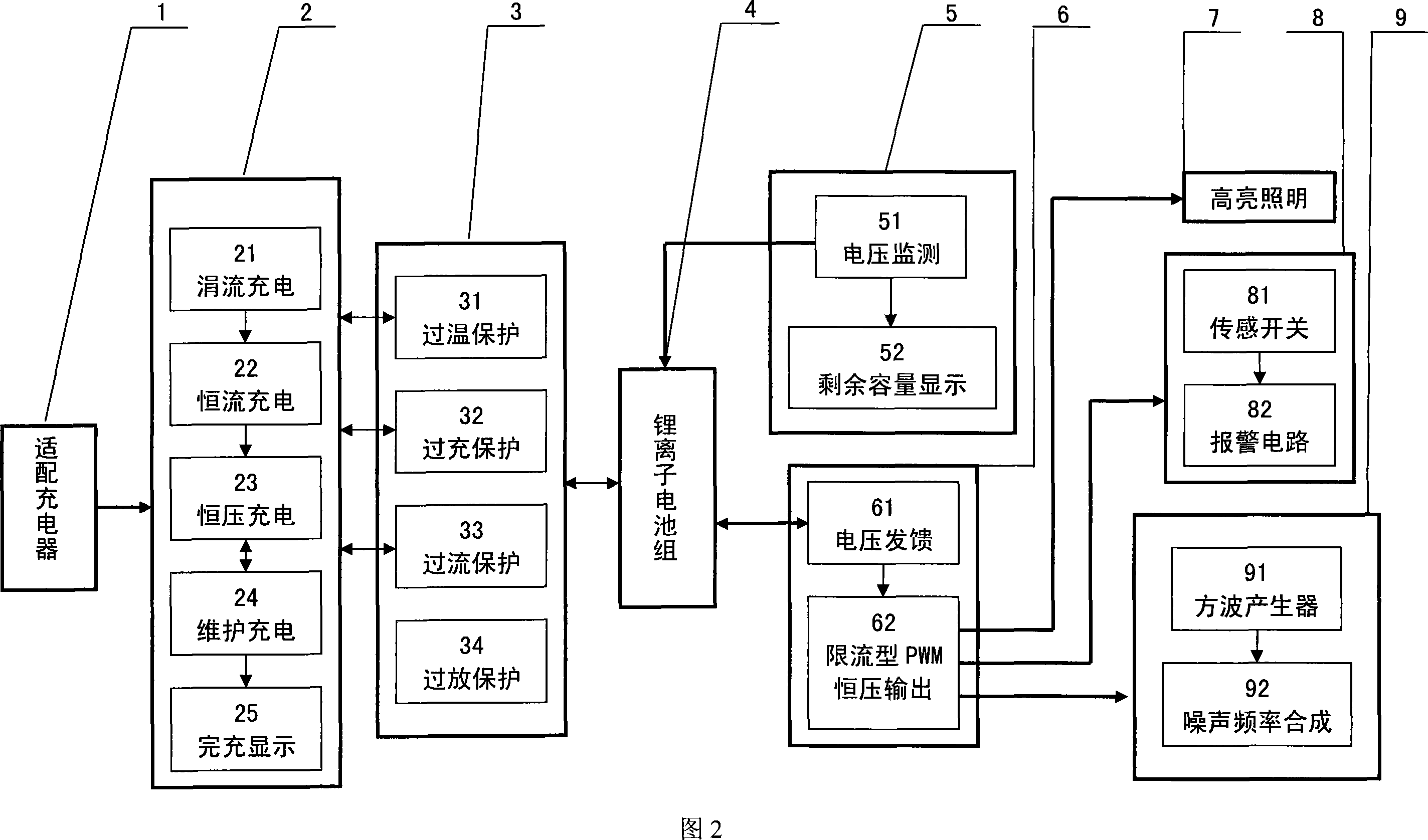Multifunctional carry-on power supply
A portable power supply, multi-functional technology, applied in the direction of measuring electricity, current collectors, electric vehicles, etc., can solve the problems of increasing the risk of use, shortening the service life of lithium-ion batteries, etc., to achieve enhanced safety, increased charging capacity, and energy efficiency. Effect
- Summary
- Abstract
- Description
- Claims
- Application Information
AI Technical Summary
Problems solved by technology
Method used
Image
Examples
Embodiment 1
[0030] As shown in Figures 1 and 2, the multifunctional portable power supply provided by the present invention includes a rechargeable and dischargeable parallel lithium-ion battery pack, which is sequentially connected to the lithium core quadruple protection circuit and the charging management circuit through wires; The lithium-ion battery pack is connected to the battery capacity indication circuit through wires at the same time; when charging, the adapter charger is connected to the charging management circuit to charge the lithium-ion battery pack connected to the lithium core quadruple protection circuit; when discharging, the lithium-ion battery pack Through the DC-DC conversion circuit, the peripheral electronic equipment is discharged, and at the same time, the DC-DC conversion circuit is used to supply power to the multi-functional expansion circuit. The multifunctional expansion circuit includes a lighting circuit, a mosquito repelling circuit, and an alarm circuit....
PUM
 Login to View More
Login to View More Abstract
Description
Claims
Application Information
 Login to View More
Login to View More - R&D
- Intellectual Property
- Life Sciences
- Materials
- Tech Scout
- Unparalleled Data Quality
- Higher Quality Content
- 60% Fewer Hallucinations
Browse by: Latest US Patents, China's latest patents, Technical Efficacy Thesaurus, Application Domain, Technology Topic, Popular Technical Reports.
© 2025 PatSnap. All rights reserved.Legal|Privacy policy|Modern Slavery Act Transparency Statement|Sitemap|About US| Contact US: help@patsnap.com



